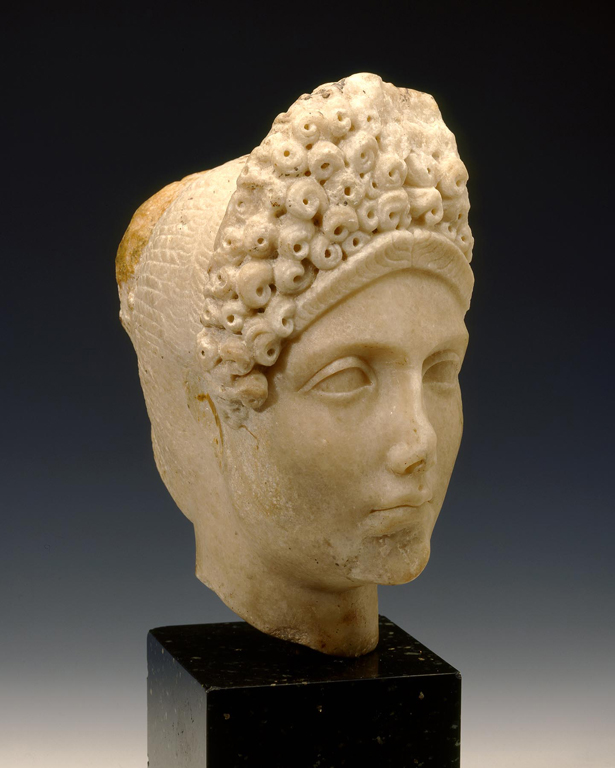Favorite Art Fact File
Who?
Alexis Culotta, IAS Blog staff writer
What is one of your favorite artworks?
I can never resist a close look at female portraiture of the ancient Roman Flavian Dynasty (69-96 CE).
… . and your favorite detail?
It goes without saying that these ladies knew how to style hair! These impressive “up-dos,” complete with a shelf-like projection of curls near the forehead met by elaborate plaits swirled into a chignon at the back of the head, undoubtedly required a significant amount of time and the aide of several maidservants. They are so distinctive that, like many portraits of women from the ancient Roman Empire, they can help us date these portraits even when individual identification eludes us.
Why?
One of the elements that fascinates me in the field of art history is how most ancient cultures behaved in ways that are similar to our patterns today. These female portrait busts of the Flavian Dynasty exemplify this concept: even in the ancient world, women sought to define their images with these elaborate and unique styles, not that unlike when celebrities appear on the red carpet for events today. These portraits thus give us a window into Rome in the 1st century CE, but they also help us realize our inherent connections to our past.
IASBlog (Alexis) explains …
The Flavian Dynasty (69-96 CE) was ushered in with the reign of Vespasian (69-79 CE), who set about restoring the Roman populous’ faith in the Emperor following the relatively disastrous rule of Nero (54-68). A reflection of this desire was his initiation of construction on the Flavian Amphitheater (better known today as the Colosseum, and earning this name due to its proximity to the Colossus of Nero which once stood nearby), but one can also see this desire in his portraiture. Vespasian adopted a softened countenance in his imagery, reflecting his good nature and alluding to his desires to pull the people of Rome together.
Vespasian also initiated a series of economic reforms, which, combined with his efforts to placate the citizens of Rome, resulted in a relatively peaceful rule. His successor, Emperor Titus (79-81 CE), carried forth Vespasian’s ideology and building initiatives, however his planned contributions to Rome were cut short in part because of the aid he extended following the eruption of Mount Vesuvius (79 CE) and a sudden fever in 81 CE that resulted in his demise. The final ruler of the dynasty, Emperor Domitian (81-96 CE), continued economic reforms, including a revaluation of Roman currency, but his efforts were more appreciated by the people of Roman than its rulers. Domitian was assassinated in 96 CE, his rule usurped by Nerva.
Additional Reading:
Keith Hopkins and Mary Beard, The Colosseum (Wonders of the World). (MA: Harvard University Press, 2011).
Suetonius’ “Life of Vespasian,” in The Twelve Caesars (first published 121 CE) (Digitized version courtesy of University of Chicago).
Portrait Bust of a Woman (Flavian Dynasty), c. 1st century CE. Capitoline Museum, Rome.
Head of a Noble Woman (Flavian Dynasty), c. 96-100 CE. Milwaukee Art Museum.
Portrait Bust of a Woman (Flavian Dynasty), 1st century CE. J. Paul Getty Museum, Los Angeles.
Now it’s your turn. What is your favorite artwork? And your favorite detail of it? Why? Send us your answers by clicking the “Submit” button, and we will feature your favorite in a post.

